Text
Spiny Lobster: Spiny and Clawless but Colorful Nonetheless
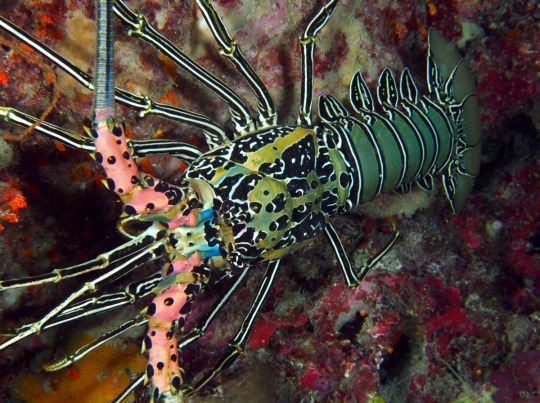
Photo from: Florent’s Guide to the Tropical Reefs
Yes, you read it right! Apparently there exists a lobster (Family Palinuridae) without claws. It may not be the one you’ve exactly imagined when you see those crustaceans whose claws are clamped in an aquarium outside a seafood restaurant but we’re pretty sure these lobsters saved the chef from some pinches. To some punctures? That we don’t know. It is named spiny lobster afterall!
I. Classification
Kingdom: Animalia
Phylum: Arthropoda
Subphylum: Crustacea
Class: Malacostraca
Subclass: Eumalacostraca
Superorder: Eucarida
Order: Decapoda
Suborder: Pleocyemata
Infraorder: Achelata
Family: Panuliridae
Genus: Panulirus
Species: versicolor (Fofonoff et. al. 2018)
II. Distribution: Hi! So my address is just right here..
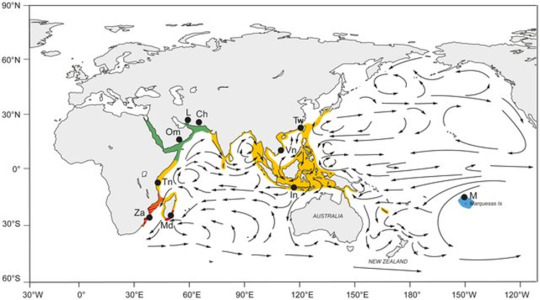
Photo from: Lavery et. al. 2014
Known as the Painted Spiny Lobster, they are native to the Indo-Pacific waters and are distributed in the Red Sea, South Africa, Southern Japan, Northern Australia, Micronesia, and Polynesia. However, the first non-native occurrence is reported in the Brunswick River, Georgia (Fofonoff et. al. 2018).
III. Anatomy: Pinching for that Body Plan
Extenal Anatomy
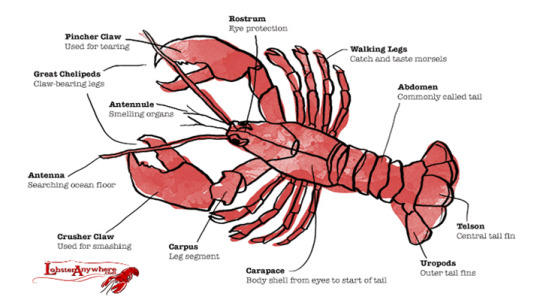
The external anatomy of a true lobster (Family Nephropidae) is composed of two parts: The Cephalothorax and the Abdomen as depicted above. The same is true for spiny lobsters but the Paniluridae traversed a different way in the path called evolution.
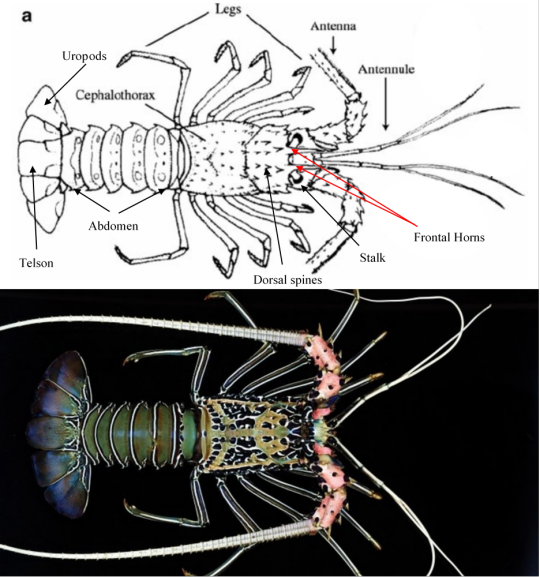
Photo from: Charles Derby 2011 (up) and Nemesis Database Species Summary (down)
So what do true lobsters have that spiny lobsters don’t? Or better yet what makes spiny lobsters unique from other lobsters?
Spiny lobsters lack the prominent claws and rostrum associated with true lobsters and instead have two frontal horns and prominent dorsal spines (Fofonoff et. al. 2018). Its body is tubular in shape with all of its legs not possessing true pincers and the first pair is not enlarged (Tavares). The antennae are cylindrical, enlarged, and longer than its body. The total body length reaches up to 400mm, but the average maximum size is around 300mm. The male spiny lobster tends to be larger than females (Fofonoff et. al. 2018).
Panulirus versicolor’s carapace has a whitish background, with large areas of bluish-black. The abdomen, on the other hand, is predominantly green in color and the telson is a mix of bluish-black and green. The legs are lined with black and blue stripes. The antenna is pinkish-red in the thicker and lower segments and becomes white ringed with black rings in the upper segment (Sutton 2017).

Photo by: Sutton 2017
The following are brief functions of the spiny lobster’s general external anatomy:
Shell: This part is the lobster’s exoskeleton, made from chitin, which serves as a protection for the internal anatomy. However, for the lobster to grow, it sheds its shell in the process called molting.
Antennae and Antennules: The antennae and antennules of the lobster are used as chemoreceptors, which detect odors and chemical signals to help them in locating food, mate, and avoid danger. In spiny lobsters, the antenna is longer than the antennules.
Stalks: For their vision, lobsters have long and stalked compound eyes. Although stalked, their vision is not that excellent, and can only see images in dim light.
Legs: Since they are under Decapoda, they have 10 legs that are used by the animal to navigate its way on the seafloor.
Tail fan: This is the last segment of the lobster. It has a telson as the center tail fin and pairs of uropods at both sides and is used for backward propulsion.
Internal Anatomy
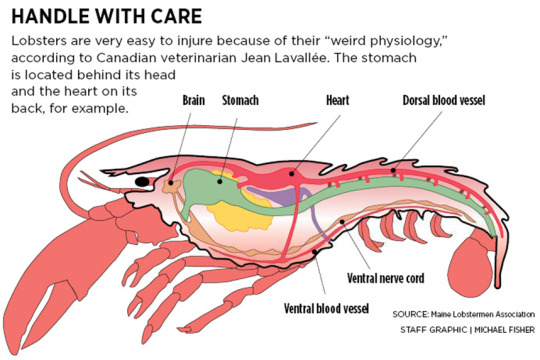
These creatures as a member of the Decapod group have internal organs that are the same as the other species. Its circulatory system is open, unlike humans. They have a single-chambered heart that is composed of muscles and ostia, or openings. Usually, the heart of an adult lobster beats for 50-136 beats per minute.
IV. Reproduction and Life Cycle
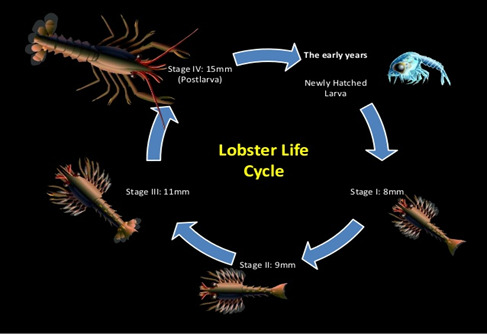
Photo from: Shiran Weerathunga, 2014
A day in a lobster’s life, they reach sexual maturity at the age of 5 to 6 years. The male’s task is to mate with as many female lobsters there is. Usually, they mate to a depth of 50 to 100 feet of water. As they mate, the male will deposit its spermatophore or known as the plaster in the female’s belly. After a while, the female will move to waters less than 30 feet deep, and when she is ready to spawn, she will use the pincers on her fifth walking leg to cut the plaster and fertilize her 80,000 to 800,000 eggs.
These eggs will be deposited under her tail, where she will perform parental duties until they hatch 9 to 10 weeks later. Usually, the larvae are transparent, large, pigmented eyes with long legs, and have little resemblance to adult lobsters. After 7 to 9 months they drift with the currents and eat plankton, after which they go to shallow water and settle at the bottom. Their lifespan is estimated to be 15 years (Cardone 2008; NOAA Fisheries 2020).
Check out this video of spiny lobsters mating!
youtube
and these cute baby lobsters!
youtube
V. Ecology
Habitat
They are found living singly or in groups in shallow water ranging from the low-tide marks up to 15 m depth and often reside in rocky areas, coral reefs, and overhangs that provide them protection (Fofonoff et. al. 2018; Mortiz 2010).

Photo by: Aquapix
Feeding Habit and Predators
Spiny lobsters are nocturnal and carnivore feeders. They even exhibit cannibalism at some point in their lives.They remain hidden in their reef or rock shelters called dens during the day and hunt during night for a variety of mollusks, shrimp, crabs, worms, and sea urchins (Sutton 2017). They use their strong legs to pry open their prey. Meanwhile, spiny lobsters are a delicacy not only to humans but octopus, groupers, and trigger fishes as well.
Be fascintaed with this video on how spiny lobsters protect themselves from a trigger fish.
youtube
VI. Relationship with Humans
Ornamental organisms
The juvenile painted spiny lobster displays a vibrant and attractive coloration of blue and purple body with white antennae which has attracted the market of tropical marine aquarium trade (Fofonoff et. al. 2018).

Photo by: Rokus Groeneveld & Sanne Rejis
For consumption
Spiny lobsters in general are eaten and are regarded as a delicacy. The meat located at the lobster’s abdomen proved to be very tasty and chewy.
youtube
While the lobster is a rich source of copper and selenium, it contains very high cholesterol, thus, it should be eaten in a regulated manner. Additionally, lobster contains zinc, phosphorus, vitamin B12, magnesium, vitamin E, and a small amount of omega-3 fatty acids (Ware 2018).
For livelihood
As of 2011, Panulirus spp. farming has not been reported in the last years to FAO but the species are cultured in Vietnam, Indonesia, Malaysia, and Philippines (Clive and Shanks 2009). Philippine waters are a natural resource of seeds for lobster farming and so there is a regional trade in peuruli and juveniles to establish spiny lobster farming.

Photo from: Mercator Media Ltd 2020
However, an article published in 2018 says that BFAR will bring the lucrative lobster culture to poor communities in Eastern Visayas by providing the cages and feeds to the beneficiaries (Meniano 2018). According to BFAR, the lobster culture is very ideal not only because of the strong demand from China and Taiwan but also because it is very expensive (4,000 per kilogram) (Meniano 2018).
VII. Did you know?
1. Lobsters pee out of their heads. While their anus is located posteriorly, their bladder is found under its brain and the opening is located at the base of their antennae, or just under their eyes!

2. The female lobster takes "her clothes off" to mate. Female lobsters “take off” their shells during molting and it is in this process that they decide to mate as well.

3. Lobsters have two stomachs. To make things even more weird, the first stomach located on its head has teeth! It functions to crush food and the second aids in digestion and is located at the abdomen.
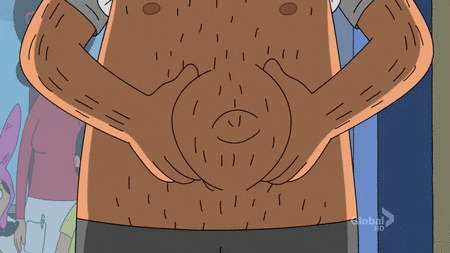
4. Lobsters can detach one of their limbs in an emergency. Don’t worry, they are able to regrow it during the molting process.(Yes, the organism in the video is a crayfish but the mechanism is the same with their lobster cousins!)
youtube
5. In the 17th century, lobster was anything but a delicacy. In fact, a field guide by Motoh from Southeast Asian Fisheries Development Center in 1980 said that the spiny lobster sells for about ₱55/kg in Manila and ₱40/kg in local areas! Now, as stated above, it costs ₱4,000/kg!
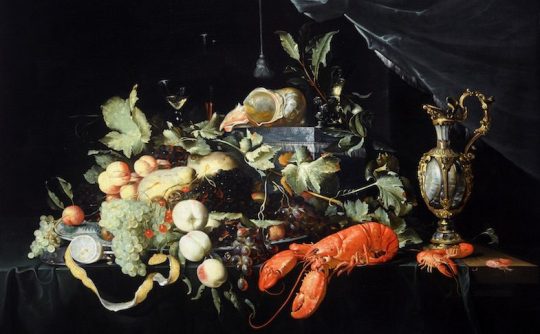
Photo from: Creative Tourist (Courtesy of Barnsley Museum)
6. The blood is known as the hemolymph and is color blue due to the presence of Copper.

Photo from: @WhatTheFFacts on twitter
VIII. References
American Lobster. (2020). Overview of Homarus americanus: The American Lobster. Retrieved November 9, 2020, from, http://www.parl.ns.ca/lobster/overview.htm
Cardone, B. (2008). The Lifecycle of Spiny Lobsters - California Diving News. Retrieved November 10, 2020, from https://cadivingnews.com/the-lifecycle-of-spiny-lobsters/
Clive, J., Shanks, S. (2009). Requirements for the aquaculture of Panulirus ornatus in Australia. Australian Centre for International Agricultural Research, 98-109
Fofonoff PW, Ruiz GM, Steves B, Simkanin C, & Carlton JT. (2018). National Exotic Marine and Estuarine Species Information System. Retrieved November 9, 2020, from, http://invasions.si.edu/nemesis/
Lavery S.D., Farhadi A., Farhamand H., Chan T.Y., Azhdehakoshpour A., Thakur V., Jeffs, A. (2014). Evolutionary Divergence of Geographic Subspecies within the Scalloped Spiny Lobster
Panulirus homarus (Linnaeus 1758). Retrieved November 9, 2020, from,DOI: 10.1371/journal.pone.0097247
Meniano, S. (2018). BFAR eyes lobster farms in 3 Eastern Visayas provinces. Retrieved from Philippine News Agency: https://www.pna.gov.ph/articles/1042610#:~:text=Lobster%20culture%20is%20very%20ideal,high%20preference%20for%20live%20lobsters.&text=A%20fishermen%20can%20raise%20up%20to%20100%20lobster%20juveniles%20in%20a%20cage.
Mortiz. (2010). Family Palinuridae - spiny lobsters. Retrieved from SealifeBase: https://www.sealifebase.ca/Summary/FamilySummary.php?ID=13
Motoh, H. (1980). FIELD GUIDE FOR THE EDIBLE CRUSTACEA OF THE PHILIPPINES. Iloilo, Philippines: SOUTHEAST ASIAN FISHERIES DEVELOPMENT CENTER (SEAFDEC) .
NOAA fisheries. (2020). Caribbean Spiny Lobster. Retrieved November 10, 2020, from https://www.fisheries.noaa.gov/species/caribbean-spiny-lobster#:~:text=Spiny%20lobsters%20may%20live%2015,3.6%20inches%20in%20the%20Caribbean.
Sutton, A. (2017). Painted Spiny Lobster – Facts and Photographs. Retrieved from Seaunseaan: https://seaunseen.com/painted-spiny-lobster-facts-and-photographs-clone/
Tavares, M. (2002). The living marine resources of the western central Atlantic. FAO Species Identification Guide for Fishery Purposes Area 51 and American Society of Ichthyologists and Herpetologists, 294-325.
Ware, M. (2018). Everything you need to know about lobster. Retrieved from Medical News Today: https://www.medicalnewstoday.com/articles/303332
#lobster#spinylobster#paintedspinylobster#Panulirus#Panulirisversicolor#Panuliridae#invertebrates aquaticinvertebrates
19 notes
·
View notes
Text
Time to Flex these Mussels
They say we are what we eat. Bodybuilders must've eaten a lot of mussels then.

Classification
Kingdom: Animalia
Subkingdom: Bilateria
Infrakingdom: Protostomia
Superphylum: Lophozoa
Phylum: Mollusca
Class: Bivalvia
Subclass: Pteriomorphia
Order: Mytiloida
Family: Mytilidae
Genus: Mytilus
Species: Mytilus edulis (Linnaeus, 1758) – edible blue mussel, blue mussel (ITIS 2020)
Hanging out with the English

Photo by Guillermo D’Elia (2016)
Just chillin in the northern part of the globe, the Mytilus edulis occurs in the northeast and northwest of the Atlantic Ocean, mostly in Scotland and the British Isles in high intertidal and subtidal zones from estuaries to oceanic waters (CABI 2020; FAO 2020).
Open Sesame: Unraveling the Insides

Photo by DesignPics

Photo by Rainer Zenz
The main parts of the mussel are its shell and its foot. The shell has 3 layers namely: nacre (mother of pearl) which is continuously secreted by the mantle, prismatic layer, and periostracum which protects the prismatic layer from abrasion. The blue mussel’s shell color is blue, usually purple, and sometimes brown. Its shell is smooth and equivalve (valves of equal shape and size) with concentric lines starting from the hinge. Its hinge line has no teeth but it has 3-12 crenulations under the umbones (Oli 2016).

Photo from: Eggermont et al
Internally, its intestine is continuous to the anus where waste is excreted from the excurrent siphon. It has 2 pairs of gills, each pair resides on each shell valve. Other internal organs include the hepatopancreas, kidney, gonad, and a 2-chambered heart. Its nervous system consists of ganglia or nerve centers because it has no brain or head in their body. Its foot is protruded outside the shell for locomotion and anchoring to substrates (Oli 2016).
Check out the video below to further know about its anatomy.
youtube
Hold On Tahong!

Wonder how mussels are able to anchor themselves?
Interestingly, in the foot of mussels are byssal glands that produce byssal threads. These threads are strong and silky fibers made from proteins and are responsible for anchoring the organism to a substrate. With this, the industrial and medical areas have studied this “glue” which offered on how to create artificial tendons (Kenedy 2019).
Life (and Production Cycle)


Photo from: Science Learning Hub (top), FAO (bottom)
A bed, not the type you’d sleep on, but reproduction can still happen 👀
As adults, blue mussels are typically found in dense mussel beds. They are broadcast spawners meaning that both have a separate male and female sex and they cast their gametes (sperm and eggs) into the water at the same time and fertilization takes place in the environment. See this video below in which a blue mussel releases its sperm in the water.
The larvae then undergo a series of metamorphosis from planktonic trochophore to veliger until such time it attaches to algae and after some time, joins other mussels.
Since this species is capable of being cultured, instead of settlement on filamentous algae in the wild, they are attached to the ropes and bamboo rafts for the initial settlement during aquaculture and they no longer need a secondary settlement because they are already with other mussels.

Photo from: GNS Science
youtube
Ecology
If a blue mussels were to submit a resume, it will surely get accepted. Why? They are very versatile!
Blue mussels are capable of withstanding wide fluctuations in salinity, desiccation, temperature, and oxygen tension (FAO 2020). These abilities enable it to occupy a variety of microhabitats and expand its zonation range from high intertidal to subtidal regions, from estuaries to the ocean waters. It can survive in countries with climatic conditions such as mild, subtropical to frequently frozen habitats because they are both euryhaline and eurythermal (FAO 2020)
What’s the Menu to Being the Menu Real Quick
Mussels are often on the seafood restaurants’ menu. But what is on the mussel’s menu?
They are filter feeders and so any detritus and plankton in the water columns that happen to drift near them can be pulled towards the organism through ciliary actions. Unfortunately, they are not only on the seafood restaurants’ menu but a lot of aquatic organisms also feed on them as well - from sea stars, sea anemones, snails, crabs, fishes, to diving ducks, northwestern crow, gulls, and sea otters. Maybe their versatility also has its downsides and this is mainly being exposed to a lot of predators.

Photo from: Ruth Foster
However, without mussels that filter the water to take out toxins, algae and debris, the water will not be as clean, and without clean water, fish will have less oxygen causing them to die. Furthermore, they help concentrate the nutrients on lake bottoms and river-beds for other aquatic plants and animals.
Watch this video to see how mussels can help in improving the water quality in terms of turbidity:
youtube
Mytilus edulis @ 18: Welcome to Legality

Photo from: British Antarctic Survey
Most cultured mussels are produced in less than 2 years but in the wild, blue mussels can live up to 18-24 years (FAO 2020), hence its shell growth over the years is a powerful indicator for environmental changes (British Antarctic Survey 2018).
A new study headed by Leca Telesca from University of Cambridge, claims that they have developed a method to accurately describe which specific traits change when facing specific environmental conditions regardless of age, species and other potentially confounding factors (British Antarctic Survey 2018). This is an important feature to track environmental stressors throughout the years.
Connecting with my Hooman
Have you ever tasted a tahong? Umm.. the blue tahong? Cos I haven’t. But they say that the blue tahong’s meat is excellent compared to the green-lipped tahong. What about you? What KINDS of tahong have you eaten? 👀

Centuries of Blue Entrée

Mytilus edulis has long been utilized and exploited even way back 6000 BC as scraps of shells were found as kitchen middens (FAO 2020). Blue mussels are harvested as a food source both from the wild and as farmed sources from commercial aquaculture. Blue mussels are a very important food source, especially to the coastal communities.
DANGER: Toxic Shellfish Ahead

Despite its popularity as a food source, Diarrhetic Shellfish Poisoning (DSP) and Paralytic Shellfish Poisoning (PSP) pose a serious threat to the consumers that often leads to long-term industry closures and human health problems (FAO 2020) These poisonings are caused by harmful algal toxins consumed by the mussel.
Aiding the Economy
Blue mussel is an economically important species in the northwest Atlantic and temperate zones both imported and exported in the U.S. domestic fish market. With exported 2,018,000 lbs ($3.86 million) of all mussel species both wild and farmed harvest in 2013-2014 (The Safina Center 2017).
In the Philippines, the volume of farmed mussels continues to increase with 18, 774 metric tons to 26, 302 metric tons harvested last 2016 and 2018 respectively. (psa.gov.ph)
Interestingly, blue mussels are not that common compared to green mussels in the Philippines! Hmm… No wonder I haven’t eaten one yet!

Fun Facts Time ! ! !
Yes... We know this is your most awaited...

1. It was just an accident!

The introduction of the blue mussel in the Philippines is possibly accidental due to shipping activities according to Philstar.com.
2. It’s an engineer! Yep, mussels are!
Unlike you. . . they’re an ecosystem engineer.

Mussels are considered to be an ecosystem engineer as they can alter their environments for the better. They filter particles and make the water clean that positively affect their ecosystem and everything else that lives within the ecosystem.
3. Colorful Comparison

The mantles of lady mussels are orange while gents’ are creamy white.
4. Sorry SpongeBob We Must Side With Plankton

Mussels feed entirely on plankton. To do this they can filter up to 65 litres of water a day.
5. Gandang Natural! Finger Comb!

Chitin from shellfish such as in mussel is used to make “chitosan” which is found in moisturizers, hair-care products, and medical applications such as wound dressings and as a protective coat for wheat seeds.
6. Mussels do fish! …What?

Some species of mussels have to “go fishing” in order to get fish nearby to release their larvae for attachment as their life cycle includes fish as a host. Their mussel larvae attach themselves to the gills of fish, where they develop into juvenile mussels before detaching into the stream or river. To attract fish, mussels have developed very ornate lures that resemble small prey fish (Purdue University).
Check out these videos on how these mussel Lampsilis sp. attract fish.
youtube
youtube
Reference:
British Atlantic Survey (2018). Blue mussel shape is a powerful indicator for environmental change. Retrieved October 14, 2020, Available from: https://phys.org/news/2018-02-blue-mussel-powerful-indicator-environmental.html
CABI. (2020). Mytilus edulis (common blue mussel). Retrieved October 15, 2020. Available from:https://www.cabi.org/isc/datasheet/73755#:~:text=trossulus%20occurs%20in%20the%20north,native%20(Wonham%2C%202004).
Entrepinoys Atbp. Business Ideas Philippines. (2012). Mussel Culture (Tahong). Retrieved October 14, 2020 from https://ep.franphil.com/mussel-culture-tahong/
FAO (Food and Agriculture Organization). (2020). Mytilus edulis (Linnaeus 1758). Retrieved October 14, 2020. Available from: http://www.fao.org/fishery/culturedspecies/Mytilus_edulis/en#:~:text=Blue%20mussels%20are%20widely%20distributed,%2C%20temperature%2C%20and%20oxygen%20tension.
ITIS (Integrated Taxonomic Information System). (2020). Mytilus edulis (Linnaeus 1758). Retrieved October 14, 2020. Available from:https://www.itis.gov/servlet/SingleRpt/SingleRpt?search_topic=TSN&search_value=79454#null
Kenedy J. (2019). What Is a Byssal Thread?. Retrieved October 14, 2020. Available from: https://www.thoughtco.com/byssal-byssus-threads-2291697
Oli NA. (2016). Biology of Mussels and Camps. Retrieved October 14, 2020. Available from: https://www.slideshare.net/Nazmuloli52/biology-of-mussels-camps
Philippine Statistics Authority (PSA). Fisheries Statistics. Retrieved October 14, 2020 from https://psa.gov.ph/sites/default/files/Fisheries%20Statistics%20of%20the%20Philippines%2C%202016-2018.pdf
Philstar (The Philippines Star). (2015). Blue mussels reach Pangasinan coast. Retrieved October 14, 2020 from https://www.philstar.com/business/science-and-environment/2015/12/30/1537711/blue-mussels-reach-pangasinan-coast
Purdue University. (n.d.). Heart of the Tippy. Retrieved October 14, 2020 from https://www.purdue.edu/extension/mussels/more-about-mussels/
The Safina Center. (2017). Blue Mussel Mytilus edulis. Retrieved October 14, 2020 from https://seafood.ocean.org/wp-content/uploads/2017/01/Mussels-Blue-US-Atlantic
THAT’S IT FOLKS. BYE!

4 notes
·
View notes
Text
Oh a Wet Spider
What has a beak, 3 hearts, and can solve puzzles?
Alien???!!
Nope Karen, definitely not. It is our octopus! Last October 8, we celebrated the World’s Octopus Day! And as a hark back to them, let us dive deep to meet our ocean’s friend.
Say hi to the our little friend Octopie! She’s in the tank.
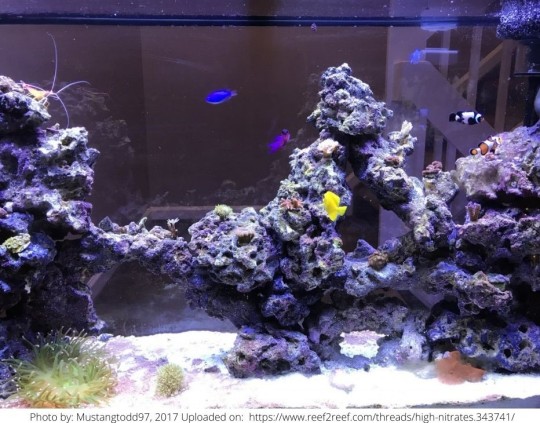
What do you mean she’s not in the tank? She must’ve escaped!

Photo from Health and Safety Authority 2020
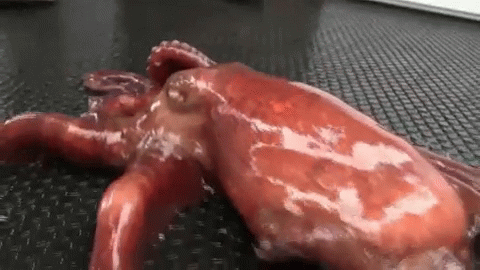
gif link: https://tenor.com/search/octopus-gifs
Oh, here she is! Octopie sometimes enjoys a good stroll around the neighborhood as you can see. She just needs a small fetch to get back to her place.
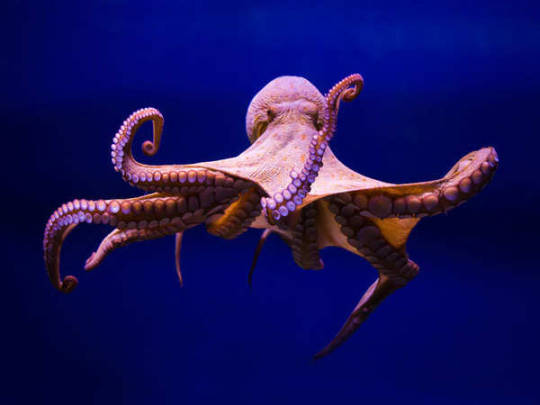
Photo from ET Bureau 2018
Classification of the Octopus vulgaris
Kingdom: Animalia
Subkingdom: Bilateria
Infrakingdom: Protostomia
Superphylum: Lophozoa
Phylum: Mollusca
Class: Cephalopoda
Subclass: Coleoidea
Superorder: Octobranchia
Order: Octopoda
Suborder: Incirrina
Family: Octopodidae
Subfamily: Octopodinae
Genus: Octopus
Species: Octopus vulgaris (Cuvier 1797)- Common Octopus (ITIS 2020)
Where do these guys live?
Just like Ursula, the Octopus vulgaris reside at the surface and depths of 100-150 meters in tropical, subtropical, temperate regions living in the benthic, reef, and coastal biomes. Mostly they have a worldwide distribution. However, they are native to the Indian, Atlantic, and Pacific ocean but also abundant in the Mediterranean Sea, Eastern Atlantic Ocean, and the Japanese water (Case 1999).
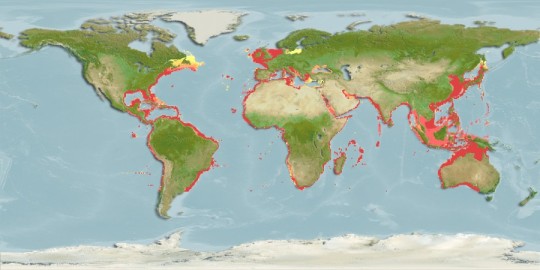
Photo from Aquamaps
Common Octopus: What’s with the Bod?
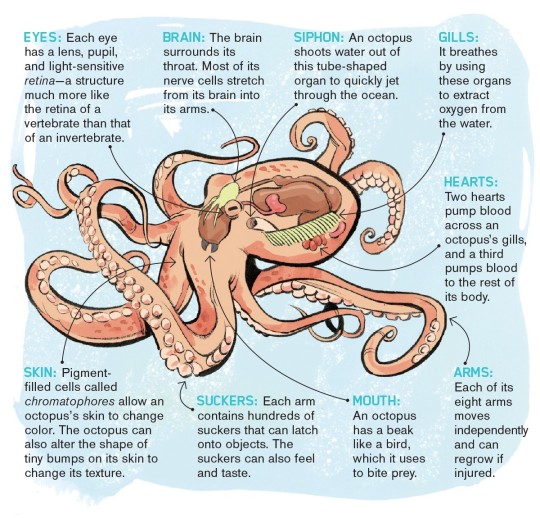
Octopus Anatomy Diagram (Anatomy Note)
They have 8 long arms where the underside of it has 2 rows of ring-shaped suction cups for grasping which can be compared with our fingers. On average each tentacle has 240 suction cups, it turns out that octopus has 1800 fingers on the 8 hands (Notord 2017). Wow, that means it can slap you eight times! Not to mention, the row of mark of suckers it’ll leave behind. Ouch!
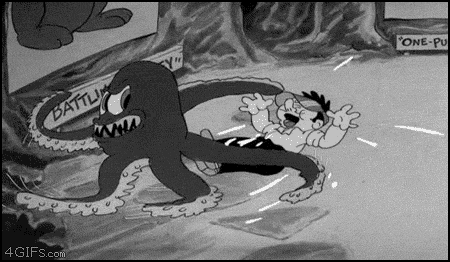
They have 3 hearts and blue blood. Two pump blood through each of the two gills, while the third pumps blood through the body. Interestingly, the head and associated sensory organs of an octopus are well developed. In this species, its head and eyes are the key characteristics of the organism. The vertical lobe of the brain of this octopus involves it to have sophisticated behaviors and learning memory systems.
The study by Bryne et. al (2014) shows that the O. vulgaris have a lateral preference on its either left or right eye in monocular vision. Their eyes are similar to the human eyes with a cornea, iris, lens, virtuous region, retina, optic nerve, and ganglion but it lacks a blind spot (WordPress 2014).
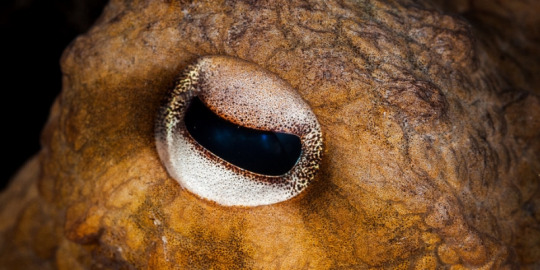
Photo from Octolab 2019
It is because of their intelligence and extraordinary suckers that makes octopus not exactly the best organism to keep as pet. They often escape their aquariums! It also doesn’t help that some of them are capable of “walking”.

youtube
Check out this video of an octopus dissection and examination of its anatomy!
youtube
Wheel of Life: Octopus saga
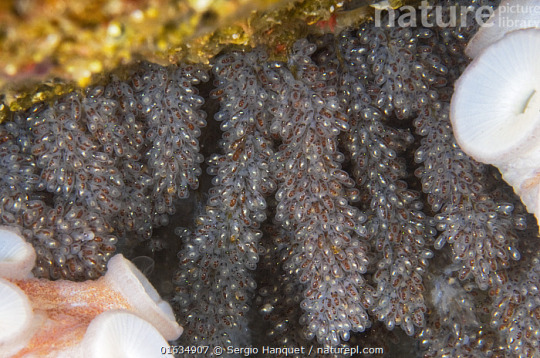
The common octopus has individuals of both sexes. The male approaches the female octopus, who fends off from him then accepts him later on. He will pass his spermatophores to her by inserting his hectocotylus, a modified arm, in her mantle cavity; for several hours for a week or so both of them will copulate.
The common octopus are oviparous and can lay 100,000-500,000 grain-like eggs in shallow water and attach them to a substrate. Common octopuses show parental care for their eggs where they rarely leave their eggs and do not eat for 4-5 months. Their planktonic stage can last for 60 days, and 30 days for their settlement. (Case 1999; MarineBio c1998-2020).
Octopus Copulating
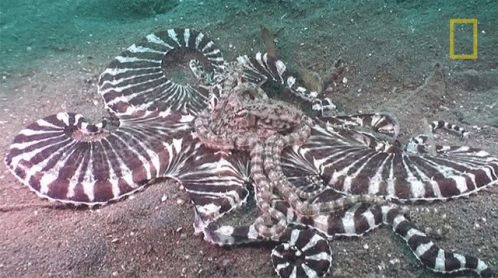
youtube
Eggs Hatching
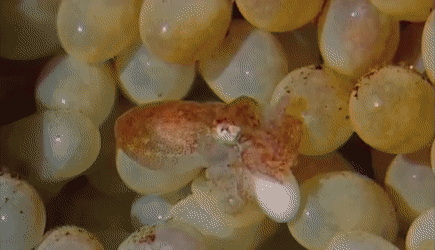
Watch the final act of a mother octopus protecting her eggs which will surely stir your emotions
youtube
Into the Unknown: Octopus and its Environment
The common octopus is able to adapt to the different habitats where they can hide by their camouflage; these octopus are able to conceal themselves in order for them to protect themselves and to feed by contracting and expanding their specialized cells called chromatophores. They are nocturnal animals and tend to be solitary and territorial but still interact with other octopus at times. O. vulgaris are known to be active predators feeding on gastropods and bivalves.
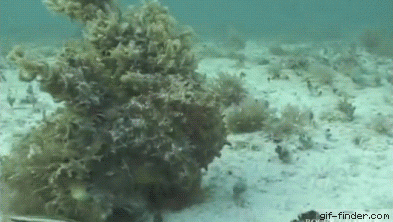
Relationship with Humans
Have you ever eaten an octopus? If yes, then you might already have an idea as to how our relationship is with octopuses. Let’s take a tour of the different parts of the world and have a sneak peek on how they prepare octopus to become a delicious meal.
Octopus inspires chefs to be creative
The consumption of octopus has been widely distributed throughout the globe, deeming chefs to be inspired by them. In Korea, octopus are eaten raw and alive while in Japan, they are prepared with flour and mixtures to create the famous takoyaki. In Puerto Rico, a known octopus delicacy called Octopus carpaccio is served. Other countries such as Los Angeles and Chicago are also equipped with their octopus dish.
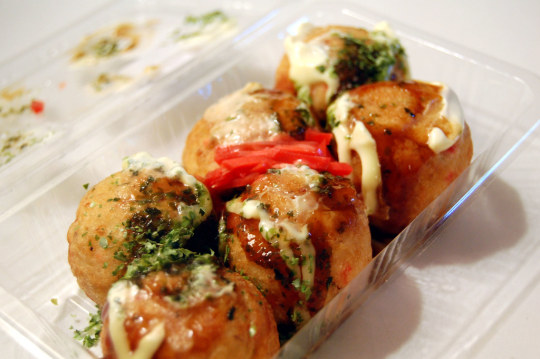
Takeaway Takoyaki (by Su-Lin)
Check out this video of a popular way of eating octopus in Korea
youtube
Giving an Arm to the Economy

Photo by Rory Hyde 2008
In the Philippines, octopus are landed by small-scale opportunistic fishers that will bring any valuable catch to local middlemen (buying stations) that trade an assorted array of species for export purposes. Only a small number of processing plants in the Philippines process and export octopus. All octopus from the Philippines is exported frozen and no other, more detailed figures are available. Figures indicate that around 5,857 MT was exported in 2017, with an estimated value of 24,9 million US$.(Seafood Tip, 2020)
At a global scale, China, Morocco, Mauritania, Spain and Vietnam are the main exporters of octopus. Global imports of octopus totaled an average of US$ 1.6 billion dollars per year between 2009 and 2013. Major markets are centered in Asia and Europe, particularly Japan, South Korea, Italy and Spain.
The global appetite for octopus is growing, how about its number in the ocean?
Global octopus catch peaked at almost 380,000 tonnes in 2007, and has since declined by a tenth to 335,865 tonnes in 2012.
Didn’t see that one coming...
1. Sex is a Death Sentence.
As with most creatures, the octopus's main purpose in life is to reproduce. However, if it knew just what was waiting for it soon after, it might think twice. Both the male and female octopuses die soon after mating. The male dies a few months afterward or sometimes after mating as it gets eaten or strangled by the female octopus, while the female dies shortly after the eggs hatch due to exhaustion and hunger from taking care of their young.

2. Octopus Prime! Transformer Edition!
Octopuses are the first invertebrates to be seen using tools. Here is an octopus hiding in a coconut shell. Funny how they underwent evolution by disregarding their shells completely and then resorting to tools for protection. But wait! Octopus may have lost their shells but this means they could fit into anything that is bigger than their beak.
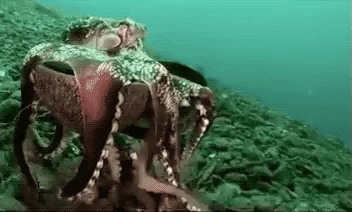


4. Let it grow!!
If a tentacle is amputated for any reason, the octopus is able to regenerate the limb. This is similar to other marine creatures such as the starfish.

5. We have outlived you Little foot.
Octopus were existent since the Carboniferous making them waaaaay older than dinosaurs and date back a whopping 296 million years.
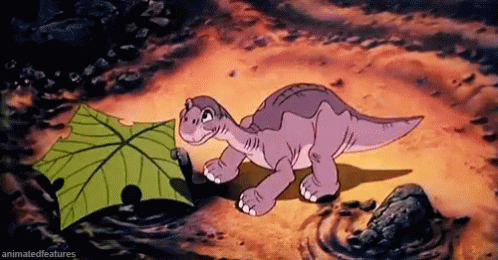
6. Colorblind but not really
While the eyes of octopus suggested a convergent evolution with those of humans in terms of their structural parts, they are colorblind. They have only one type of receptor which makes them incapable of colored vision but it is their bizarre shaped eyes that allows light to enter in may directions, creating blurred images - an effect called chromatic aberration.
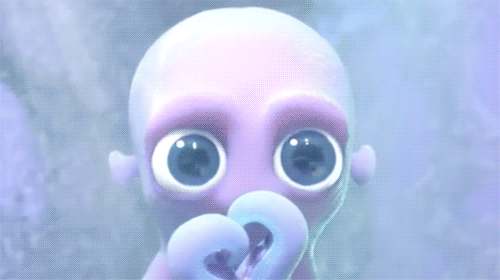
7. Hey, daydreamer!
Experiments on octopuses have revealed that they are able to change their camouflage during sleep. Whether they were dreaming or not is still a mystery to a lot of scientists.
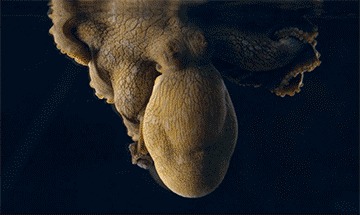
And that’s all about Octopie and some of her friends.
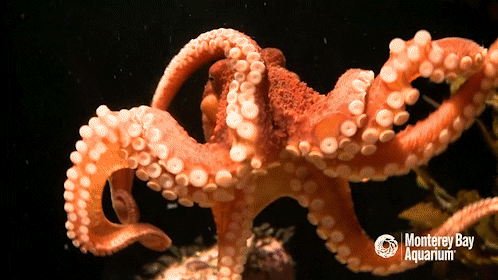
Ugh finally, Octopie is now back to her home!
References
Bradford, A. (2017). Octopus Facts. Live Science. Retrieved 2020 October 6 from:https://www.livescience.com/55478-octopus-facts.html#:~:text=The%20common%20octopus%20(Octopus%20vulgaris,and%20weight%20around%20110%20lbs.
Case, R. (1999). "Octopus vulgaris". Animal Diversity Web. Retrieved 2020 October 5 from:https://animaldiversity.org/accounts/Octopus_vulgaris/
ITIS (Integrated Taxonomic Information System). (2020). Octopus vulgaris (Cuvier 1797). Retrieved 2020 October 6 from:https://www.itis.gov/servlet/SingleRpt/SingleRpt?search_topic=TSN&search_value=82603#null
MarineBio. (c1998-2020). Common Octopuses, Octopus vulgaris. Retrieved 2020 October 6 from ,for%20up%20to%201.5%20years.
Notord. (2017). Octopus: The Cursed Genius of the Ocean. Retrieved 2020 October 10 from: https://steemit.com/science/@natord/octopus-the-cursed-genius-of-the-ocean
WordPress. (2014). Anatomy. Retrieved 2020 October 6 from :https://cephalopods2014.wordpress.com/anatomy/
Seafood Tip. (2020). Octopus in the Philippines. Retrieved 2020 October 6 from https://seafood-tip.com/sourcing-intelligence/countries/philippines/octopus/
Octopus Anatomy Diagram, (n.d.). [image]. Anatomy Note Web site. Retrieved 202 October 6 from https://www.anatomynote.com/animal-anatomy/marine-animal-anatomy/octopus/octopus-anatomy-diagram/
Su-Lin. (2018). Takeaway takoyaki. [image]. Flickr Web site. Retrieved 2020 October 6 from https://www.flickr.com/photos/15157510@N00/2308993346
Saelinger, T. (2013). Octopus carpaccio. [image]. Today Web site. Retrieved 202 October 6 from https://www.today.com/food/abundance-octopus-inspires-chefs-get-creative-6C10185385
Saelinger, T. (2013). Fideo with octopus and kielbasa. [image]. Today Web site. Retrieved 2020 October 6 from https://www.today.com/food/abundance-octopus-inspires-chefs-get-creative-6C10185385
Saelinger, T. (2013). Charred octopus. [image]. Today Web site. Retrieved 2020 October 6 from https://www.today.com/food/abundance-octopus-inspires-chefs-get-creative-6C10185385
Octopus. (2019). [image]. Vietnam News Web site. Retrieved 2020 October 6 from https://vietnamnews.vn/economy/484737/s-korea-largest-export-market-for-vietnamese-squid-and-octopus.html
Steene, R. (2013). Octopus hiding in a coconut shell. [image]. Live Science Web site. Retrieved 2020 October 6 from https://www.livescience.com/41924-smart-octopus-facts.html
Octopus hiding in a shell. (2019). [image]. Thoughtco Web site. Retrieved 2020 October 6 from https://www.thoughtco.com/fascinating-octopus-facts-4064726#:~:text=If%20the%20invertebrate%20structure%20has%20suckers%20along%20its,cuttlefishand%20squids%2C%20have%20eight%20arms%20and%20two%20tentacles.
4 notes
·
View notes
Text
golden apple snail
Do you know Gary? The fictional character in Spongebob who lives in a pineapple home and vocalizes like a cat? Of course, you do! In this blog, we will be learning more about its relative, the golden apple snail which sadly doesn’t produce meowing sounds like Gary. Do you see their similarities?

I. Classification
You probably have an idea or two about these infamous invasive species under Pomacea genus especially Pomacea canaliculata. After all, they are almost everywhere even in your backyard! That is if your backyard has a puddle of water.
Let’s dig deeper into these round, golden, and invasive snails. Let’s begin with their taxonomic classification:
Kingdom: Animalia
Subkingdom: Bilateria
Infrakingdom: Protostomia
Superphylum: Lophozoa
Phylum: Mollusca
Class: Gastropoda
Subclass: Prosobranchia
Order: Architaenioglossa
Family: Ampullariidae
Genus: Pomacea
Species: Pomacea canaliculata (Lamarck 1828) (ITIS 2020).
II. Biology
Unsurprisingly, they are under class Gastropoda. Why is that so, you may ask. Well, Mantle? Check! Radula? Check! Muscular ventral body acting as a foot? Check!
But wait, these are the characteristics of Mollusks! So how is the molluscan body plan modified in gastropods?
Does its head have well-developed eyes and sensory tentacles? Is there a foot and a visceral hump that includes the digestive gland and part of the gut? Is its visceral hump and mantle enclosed in a singular shell? If all your answers are yes, then it is a Gastropod. Well, actually, some may have no shell, but let’s focus on Golden Apple Snails in this blog, shall we?
A. Distribution

The species originated from Argentina going north to the Amazon basin and were then introduced to countries in the South, East, and Southeast of Asia such as the Philippines, Japan, Taiwan, Vietnam, Cambodia, Thailand, Laos, Korea, Sri Lanka, parts of Indonesia and Malaysia, southern China, Singapore; also Hawai‘i, Guam, and Papua New Guinea; the Dominican Republic; the USA (particularly in Florida, Texas, California) (ISSG 2005).
Do you know where this round, golden and invasive mollusk was first introduced in the Philippines?
Pomacea canaliculata was introduced in the Philippines, specifically in Batangas, from Taiwan 1983. In the same year, Pomacea vigas was introduced in Makati, Metro Manila from Florida. Another species was introduced in Cebu from Argentina in 1984 and at present, these species are almost present in all parts of the Philippines (Acosta and Pullin 1989).
B. Habitat

Most Pomacea snails inhabits the ponds, swamps, irrigated fields, and wetlands. During the dry season, the species bury themselves in the soil to keep them moist and this prolonged dormancy in the dry season can last for 6 months! They will return to being active when soil is flooded, a verification that they can withstand different conditions, even pollutants and low oxygen in the water (The Apple Snail Website 2020). Occasionally, some might appear on aquariums as mystery snails and some are actually treated as pets along with other fishes.
C. Anatomy
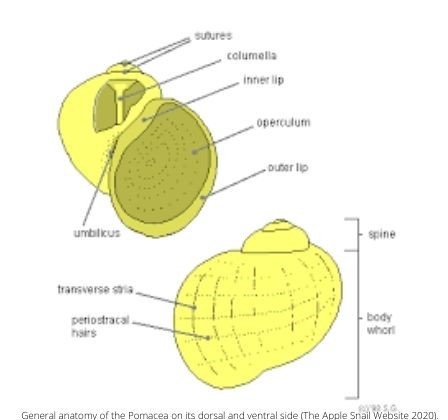
As mentioned earlier, they are gastropods, a prosobranch at that, under Phylum Mollusca so there is a presence of calcareous shell. Pomacea snails are overall globular in shape which can grow to a height of 40-60 mm, 40-75 mm wide, and 150 mm in length. Depending on species, apple snails can vary with their colors, some are yellow, brown, and green. Generally, it could have five to six whorls, with a deep intended suture to separate it. The same with other Prosobranchs, Pomacea has an operculum, a calcareous feature that is moderately thick, concentric, and has a light to dark brown color, that retracts at the shell opening as a protective response when threatened. Try knocking, maybe they’ll open up!

Although they are prosobranchs, a notable feature of apple snails under genus Pomacea is their possession of fully functional lungs used for breathing and floating in addition to their gills.
C.1 Male and Female Differences
Sexual dimorphism manifests in the Genus Pomacea. Just like how us humans differ in appearance and hormones based on sex, Pomacea snails also exhibit different appearances (but not that drastic though) based on their sex.


Males have larger, oval-shaped, and rounder apertures but they mostly smaller in size compared to females. The operculum of the female (a1) is concave while it is convex in male (a2). On the other hand, the female shell (b1) curves inward; the male shell (b2) curves outward. (Tripoli et. al. 2015; MS Dela Cruz et. al., cited by The Apple Snail Website 2020).
Have you noted their differences? The next time you get to see these snails, you’ll already have an idea of its sex based on looking its shell!
Try guessing the sex of these two! Which one is the male? Which one is the female? To check you answer: visit this link!
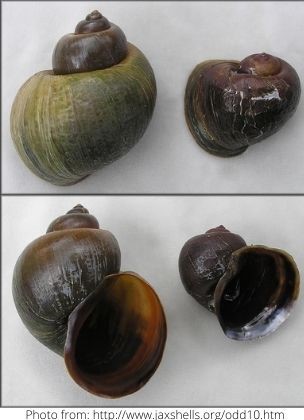
Did you guess it right?
C.2. Life Cycle
Briefly, the snail life cycle has the following steps:
1. Born and developed.
2. Reach sexual maturity.
3. Find a partner to mate.
4. Mating process.
5. Gestation period.
6. Egg dropping.
7. Egg hatching.
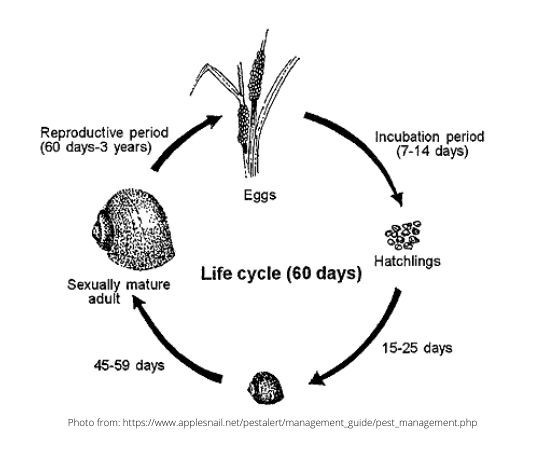
Let’s go on a journey and find more about the life cycle of Golden Apple Snails.
C.3. Mating and Beyond
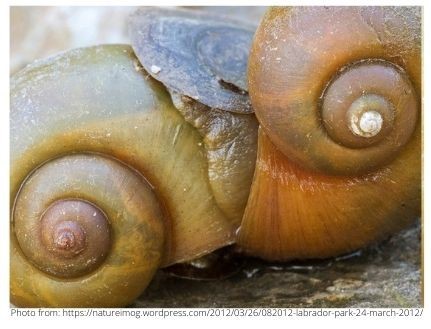
When you see a snail that seemed to be like eating another snail, ask yourself: Do they not look the same? That’s probably predation. Do they look the same? They’re wrestling.. kidding! They’re mating!
Finding partners on GAS occurs by expelling some chemicals to attract others ready to mate and use touching as a way of courting. Snail sex can be quiet confusing and AMUSING. Yep, you read that right. We recommend watching this video:
youtube
We have to take note of one thing though, unlike most other snails, P. canaliculata is not hermaphroditic, and due to sexual dimorphism, they need to copulate in pairs. Once the mating is over, they go in separate directions. Pomacea snails are oviparous but the eggs are fertilized within the female’s body. When fertilization occurs, eggs develop and once the eggs are mature they are laid about 50cm above the water surface. And voila! The cute little pinkish red eggs are out in the open and they are of very little size.


gif original link

gif original link
They are not really the best maternal figure as they are observed to have shown no parental care after adults have laid their eggs They, however, have at least the slightest conscience to lay their eggs out of the water to protect it against predation. They even go out their way to lay them in a thorny plant so the eggs won’t get easily eaten by predators. Somehow, these snails aren’t really the villain as we paint them out to be.
For a close up view on the golden apple snail laying eggs, check out this video.
youtube
Generally, after 10-20 days these eggs hatch. The newly hatched snails are about 2.5mm or 0.09inch in diameter. Just how cute they are! And they immediately feed to grow fast by being voracious feeders and become mature and be ready for mating and lay baby snails that become mature snails that lay baby snails and the cycle goes on! The Pomacea species or can reproduce rapidly and produce 1000-1200 eggs for a month (The Apple Snail Website 1998-2003).
You have ventured the life cycle of the golden apple snail! Wanna know more? Just keep scrolling down
III. Ecology
These snails are able to resist water velocities if exposed although they avoid fast-paced places due to the interferences in their activities and movements, thus, Pomacea dwells in the lentic area, and may also sometimes thrive in the lotic system. They are classified as scrapers, shredders, and collectors (Cummins and Klug 1979, cited by Martin et. al. 2017) and they mostly feed on a variety of plants to algae. It is a highly generalist and voracious macro phytophagous herbivore and would often eat any plant but it does show some preferences (Cowie, 2005). They would even eat detritus and dead insects sometimes! The reason for their extreme polyphagous habit is because as their food intake increases, the more they are reproductively active (Ghesquiere, 2005a; Tamburi and Martín, 2009, cited by Holswalde and Kondapalli 2013). See this video to see how a Pomacea snail scrapes off algae off the glass aquarium.
youtube
Local farmers from the Philippines claim that the edible native snail, Pila luzonica, has decreased drastically since golden snails were introduced (Halwart 2008). In fact, the species has since become extinct in the Cagayan Valley ever since the golden snail has been introduced and proliferated (Acosta and Pullin 1989). Not only were they destructive to the economy but they also present a problem by competing for resources against native species. They not only attacked rice species but other vegetations such as azolla, taro, and lotus (Halwart 2008).
E. Relationship with Humans
The golden snail is introduced in the Philippines by a private sector in the guise of offering a livelihood improvement countrywide, with the rationale that an existence of a huge market for ‘escargots’ can possibly be supplied by farming golden snails (Acosta and Pullin 1989). The private entrepreneurs, however, failed to mention its potential to become a pest, as was known from experience in South America and instead focused on promoting it as an export potential.
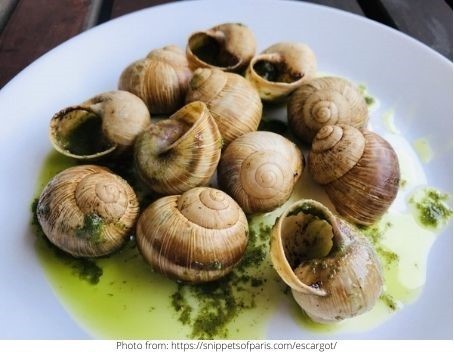
Damages and losses due to infestation of golden snail in rice farming has been detected and and was considered a pest in both irrigated and rainfed environments because of its resilience from harsh environments. In December 1988, 5 years after its introduction in the country, the total area infested with these invasive snails has accounted up to 426,000 ha and the most affected regions were region VI (Western Visayas), region XII (Central Mindanao), and Region II (Cagayan Valley) (Acosta and Pullin 1989).
The picture below shows missing plants in direct seeded rice in the Philippines (upper left), missing hills in transplanted rice in the Philippines (upper right), high density of golden apple snails feeding on rice seedlings in the Philippines (lower left) and distinctive egg masses of P. canaliculata laid on the stems of taro plants in Hawaii (lower right) (Cowie).

Efforts were made to put these snails into use and so small scale aquaculture of P. canaliculata provides fishmeal for fish, shrimp and prawn farming (Castillo and Casal, 2006) as they are a good protein source. In fact, golden snails are also eaten by poor people as a protein source (Acosta and Pullin 1989).
Because of the disastrous outcome in the rice industry brought upon by these snails, farmers have resorted to the use of chemical controls but this posed a threat in the human and environment (Halwart, 2008). Pesticides and molluscicides were utilized in attempts to get rid of them, however, water bodies served as a run-off for all the pchemicals causing the environment to be toxic and detrimental for non-targeted aquatic organisms. It also affected the workers as the pesticides have proven to be damaging to the skin, fingernails, and toenails.
Locally, ducks had also been employed to get rid of these pests. Apparently, not only have the ducks lessened their number, the ducks also laid higher quality eggs when fed with snails. The high protein content of snails also makes excellent food for broilers and snails (Catalma et al 1991).
IV. Fun Facts; Did you know?
P. canaliculata has been nominated as among 100 of the “World’s Worst” invaders (ISSG 2005).
Egg clutches of P. canaliculata are remarkable in three aspects:
they are cemented outside water
they are brightly colored
have virtually no predators
Each cluster of eggs is about as long as your little finger
P. canaliculata is more resistant to lower temperatures than most other snails from the genus Pomacea.
P. canaliculata eggs are considered to be toxic to most animals. Study shows that P. canaliculata eggs have unusual defenses of toxins that is manifested in its coloration that explains it having virtually no predators at all but fire ants.
Males must attain a minimum age, regardless of size, for the onset of reproductive maturity, whereas females must reach a minimum size regardless of age.
The average lifespan of these snails is up to 4 years
V. References
Acosta B.O., Pullin R.S., 1989. Environmental Impact of the Golden Snail (Pomacea sp.) on Rice Farming Systems in the Philippines. Nueva Ecija: Freshwater Aquaculture Center, Central Luzon State University
Castillo LV, Casal CMV, 2006. Golden apple snail utilization in small-scale aquaculture in the Philippines. In: Global advances in ecology and management of golden apple snails [ed. by Joshi, R. C.\Sebastian, L. S.]. Los Baños, Philippines: Philippine Rice Research Institute (PhilRice), 475-482.
CATALMA, M. T. E., CAPIL, D. T., ANTALAN, R. A., SERRA, A. B., BARROGA, A. J. and ORDEN, E. A., 1991. Golden snail (Pomacea sp.) use in animal feeds. International Rice Research Newsletter, 16, 26.
Cowie H.R., (n.d.) The Golden Apple Snail: Pomacea species including Pomacea canaliculata (Lamarck, 1822) (Gastropoda: Ampullariidae) DIAGNOSTIC STANDARD. Retrieved from: https://www.planthealthaustralia.com.au/wp-content/uploads/2013/03/Golden-apple-snail-DP-2005.pdf
Dreaon, M., Fernandez, P., Gimeno, E., and Heras, H. (2014) Insights into Embryo Defenses of the Invasive Apple Snail Pomacea canaliculata: Egg Mass Ingestion Affects Rat Intestine Morphology and Growth. Retrieved from https://www.ncbi.nlm.nih.gov/pmc/articles/PMC4063725/ Ghesquiere, S. 2005. “Apple Snails” (On-line). Accessed January 31, 2013 at www.applesnail.net.
GBIF (Global Biodiversity Information Facility. (2020). Pomacea canaliculata (Lamarck, 1822). Global Biodiversity Information Facility, Copenhagen. Retrieved 2020 September 28. Available from:https://www.gbif.org/species/2292582
Halwarte, M. 2008. The golden apple snail Pomacea canaliculata in Asian rice farming systems: Present impact and future threat. International Journal of Pest Management, 40:2, 199-296
Holswade, E. and A. Kondapalli 2013. “Pomacea canaliculata” (On-line), Animal Diversity Web. Accessed October 05, 2020 at https://animaldiversity.org/accounts/Pomacea_canaliculata/
ISSG (Invasive Species Specialist Group). (2005). Pomacea canaliculata (mollusc) Database. Retrieved 2020 September 26. Available from:http://issg.org/database/species/ecology.asp?si=135&fr=1&sts=sss
ITIS (Integrated Taxonomic Information System). (2020). Pomacea canaliculata. Retrieved 2020 September 26. Available from: https://www.itis.gov/servlet/SingleRpt/SingleRpt?search_topic=TSN&search_value=568121#null
Martin, P., Seuffert, M., Tamburi, N., Burela, S., Saveanu, L. (2017). Behavior and ecology of Pomacea canaliculata from Southern Pampas (Argentina). Retrieved 2020 September 28. Available from: https://www.cabi.org/ISC/FullTextPDF/2017/20173354472.pdf
The Apple Snail Website. (1998- 2003). Management options for the Golden Apple Snail. (. Retrieved 26 September 2020. Available from:https://www.applesnail.net/pestalert/management_guide/pest_management.php#foreword
Tripoli, F., Genecera, J., Matela, M.N., Fanuga, K., Velasco, D., Landero, R., Cataluña, R., Torres, M., Requieron, E., Bigsang, R. (2015). AACL BIOFLUX Aquaculture, Aquarium, Conservation & Legislation International Journal of the Bioflux Society Sexual dimorphism in the shell shape of the golden apple snail, Pomacea canaliculata. AACL Bioflux, 2015, Volume 8, Issue 6. Retrieved 2020 September 28. Available from: https://www.researchgate.net/publication/286455766_AACL_BIOFLUX_Aquaculture_Aquarium_Conservation_Legislation_International_Journal_of_the_Bioflux_Society_Sexual_dimorphism_in_the_shell_shape_of_the_golden_apple_snail_Pomacea_canaliculata
Rawlings, T.A., Hayes, K.A., Cowie, R.H., Collins, T.M. (2007). The identity, distribution, and impacts of non-native apple snails in the Continental United States. BMC Evolutionary Biology 7(1):97. Retrieved 2020 September 28. Available from DO:10.1186/1471-2148-7-97
7 notes
·
View notes